 Minoxidil
MinoxidilThe Best Hair Care For Your Hair Texture And Color
To give you the best tips and tools of the trade, we talked to top stylists, colorists, and a trichologist about the best way to care for and style your hair.
After several months of tending to our own hair a little more than usual (DIY haircuts and color during quarantine, anyone?), it’s likely you’ve learned a trick or two when it comes to general care. But, to keep your locks in tip-top shape, it’s important your hair care and styling routine are aligned to your hair type and hue. To give you the best tips and tools of the trade, we talked to top stylists, colorists, and a trichologist. Organized by hair texture and color, read on to discover the best ways to care for and style your mane both at home and in the salon.
Hair Care by Texture: Straight
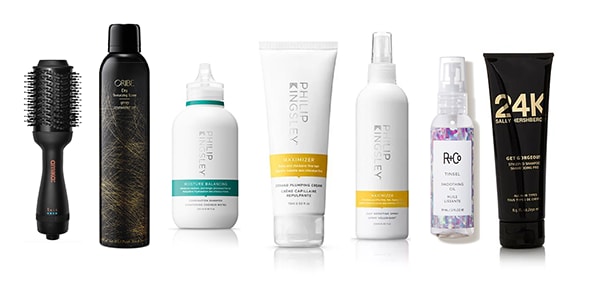
You can have straight hair that is fine, medium, or coarse textured, and caring for it is about choosing the right products, says Anabel Kingsley, brand president and consultant trichologist at Philip Kingsley. “For example, fine straight hair may be wispy and fly away, whereas coarse straight hair may frizz,” she explains. “Both these hair textures will therefore require different product needs.” she explains.
- Fine to Medium Texture: Choose lightweight smoothing products that will tame fly-aways and not weigh your style down, Kingsley says. In terms of shampoo and conditioner, she recommends the Philip Kingsley Body Building and Moisture Balancing collection.
- Thick and Coarse Texture: A heavier cream or serum may be needed, in addition to a hydrating shampoo and conditioner. Scott Fabian, a hairstylist at Sally Hershberger Nomad, likes the Sally Hershberger 24K Get Gorgeous Shampoo and Conditioner.
“Regardless of your hair type, always apply anti-frizz or smoothing products throughout your mid-lengths and ends — not your roots — to avoid dullness and limpness,” Kingsley advises. For root lift, she recommends Philip Kingsley Maximizer Root Boosting Spray, while the Maximizer Strand Plumping Cream adds volume and body throughout mid-lengths and ends.
Styling Straight Hair
When it comes to styling straight hair, Fabian says you can add sleekness or body, depending on what you’re after. “To enhance your straight hair, add R+Co Tinsel Smoothing Oil for shine or pass a flat iron over then ends to give a more professional look.” For texture, he recommends Oribe Dry Texture Spray to add a bit of grit.
Naeemah LaFond, global artistic director at Amika, likes using the brand’s new (H)air Blow Dryer Brush to style straight hair. “This tool not only makes the whole blow-out process a breeze, but it does so in the safest way by providing technology meant to protect the integrity of your hair,” she says. No one wants to sacrifice the health of their hair for convenience. “For straighter hair types, the brush can either give you a voluminous blowout, if you dry it rolled into the brush, or it can give you a more smooth finish with a bend at the ends, if you dry it by brushing the hair straight and rolling the ends,” she explains.
Hair Care by Texture: Wavy
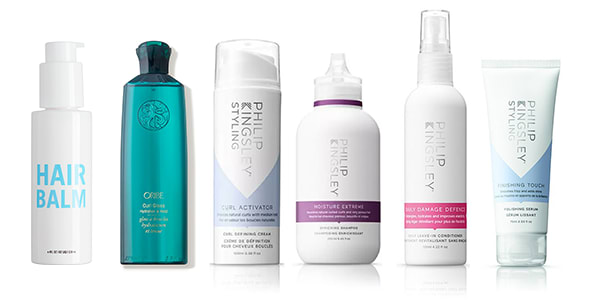
For waves and curls, Fabian says it’s important to not shampoo every day. It takes longer for your natural oils to spiral down the hair, and over-washing can result in dry, staticky hair. “Oils are good to help smooth and nourish the hair,” he adds. He recommends using Oribe Curl Gloss and Hairstory Hair Balm to style waves.
Since keeping wavy strands conditioned is so important, Kingsley recommends the Philip Kingsley Daily Damage Defence Leave-in Conditioning Spray and the Moisture Extreme Shampoo and Conditioner for natural waves. The conditioner “is deeply nourishing and moisturizing to aid with waves and curl retention,” she says.
Styling Wavy Hair
To enhance definition when styling, Kingsley likes Philip Kingsley Curl Activator Curl Defining Cream. She recommends the Philip Kingsley Finishing Touch Polishing Serum, meanwhile, to tame frizz and smooth.
Hair Care by Texture: Curly
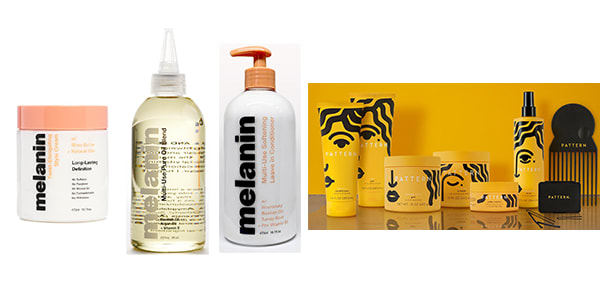
“Natural coiled curls are the most vulnerable to damage of all hair textures due to its unique structure and specific processing, styling, and grooming needs,” Kingsley says. The hair shaft of natural coiled curls is flat with a twisted structure and a thin diameter. “Where these ‘twists’ occur, there is a change in the width of the hair — think of what happens when you bend or twist a straw,” she explains. “These twists and curls are weak points along your hair, and this is one of the reasons why natural coiled curls break so easily.”
Trying to detangle curls can worsen hair breakage (if you’re not careful) and pulling may also lead to traction loss, so be as gentle as possible, Kingsley advises. “Start at the ends and work up to your roots with a wide-tooth comb,” she says. To help prevent snapping and breakage, she says to use an intensive pre-shampoo conditioning treatment at least once a week. Generally speaking, she says to look for products labeled:
- Moisturizing
- Re-moisturizing
- Emollient
- Deep conditioning
- Elasticizing
- Penetrative
- Intensive
Styling Curly Hair
Every curl is different, which is what makes curl hair so unique, Fabian notes. Some amount of trial and error is often needed to find the perfect product combination. “Trying different setting techniques is a fun way to see how many different ways you can enhance your curls,” Fabian says. While he likes the Pattern Beauty and Melanin Haircare ranges, he recommends talking to your stylist and fellow curly-haired friends for advice.
Hair Care by Texture: Fine
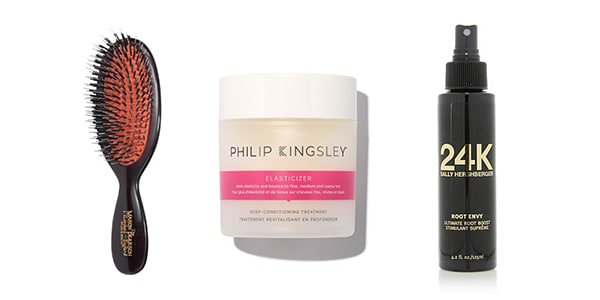
Shampooing helps deliver bounce and shine to all hair types. For finer hair, a daily habit may be necessary, Kingsley says. “Your hair accumulates bits of dirt, dust, oil and grime every day – just like your skin — and these can really weigh it down,” she explains. “Daily shampooing also helps keep your scalp healthy and clear of flakes and skin-cell build-up.”
Also, don’t believe the myth that you should skip conditioner. In fact, the right kind of conditioner (applied to mid-lengths and ends only) will make your hair smooth and shiny without limpness. At home, she recommends using the Philip Kingsley Elasticizer Deep-Conditioning Treatment once a week.
Styling Fine Hair
Fabian notes that fine hair (which can be straight, wavy, or curly) tends to be on the fragile side. When styling, he likes to use a soft brush like Mason Pearson. “Fine hair may also be on the flat side, so blow drying with volume can battle that problem,” he says. “And flipping your head upside down and rough-drying is a great way to add volume.” He recommends the Sally Hershberger 24k Root Envy for a boost.
Hair Care by Texture: Thick
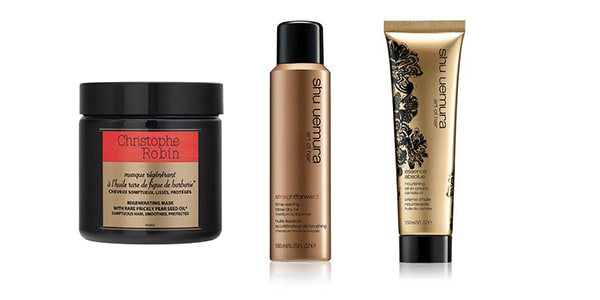
Coarse, thick is usually on the drier side, so adding moisture is key, Fabian says. He recommends the Christophe Robin Prickly Pear Treatment and Shu Uemura Essence Absolue Nourishing Oil-In-Cream to nourish and prep for styling.
Styling Thick Hair
Thick hair is definitely a big job! Fabian says to take your time and be patient so you don’t get overwhelmed. He advises blow drying in small sections. “A great product that helps speed up blow-dry time is Shu Uemura Straightforward Blow Dry Oil Spray,” Fabian says. And don’t forget about the power of a good haircut. Professionally having some weight taken out by a stylist can really help lighten up the hair.
Hair Care by Color
Regardless of what type or shade of hair color you opt for, keeping your hue vibrant and your hair healthy can prove problematic. Dana Ionato, a colorist at Sally Hershberger Nomad, recommends the K18 Peptide Masque Starter Kit for anyone with color-treated hair that’s damaged (though it works particularly revolutionary for platinum blondes). “It’s similar to Olaplex, but I like the application better,” she explains. “It’s easier to use thanks to its thicker consistency.”
Her advice: Pump a walnut-sized amount in your hand, smear it all over your hair after you shampoo, then comb it through, and leave it in. “It’s also almost clear in color, so it won’t show up on blonde or dark hair,” Ionato says, adding that it’s a permanent fix that doesn’t wash out.
Hair Care by Color: Highlights
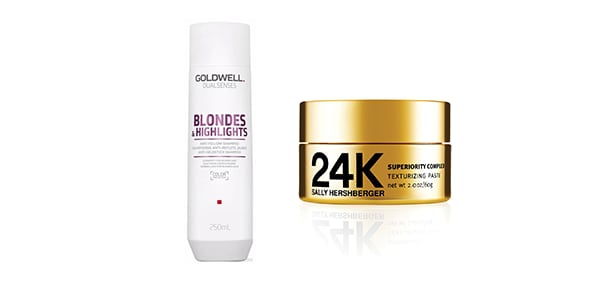
Jason Backe, CEO and master colorist at Starring by Ted Gibson, says that the biggest issue for most people with highlighted hair is that “no matter how gorgeous they look when you leave the salon, as you shampoo, the toner fades and the yellow tones start to appear.” His trick is to stay ahead of the issue? Use a shampoo and (occasionally) a conditioner with a violet base. “I am a fan of the Dualsenses Blondes & Highlights Anti-Yellow Shampoo from Goldwell,” Backe says. He recommends using the shampoo every time you wash your hair, but only use the conditioner every third wash. It’ll ensure “your highlights don’t get too drab,” he shares.
We’re all about a multitasker, and Ionato loves using Sally Hershberger 24K Superiority Complex Texturizing Hair Paste on highlighted hair — brunette or blonde — that’s lackluster. It smooths, hydrates, and adds a bit of radiance. “Once you apply it to your hair, it seals down the hair cuticle,” she says. “It hydrates and also makes any highlights look refreshed just by smoothing down the ends that are normally frizzing out.” There’s also shimmer in it, so you’ll be left with the sexiest looking hair possible, she adds.
Hair Care by Color: Single-Process
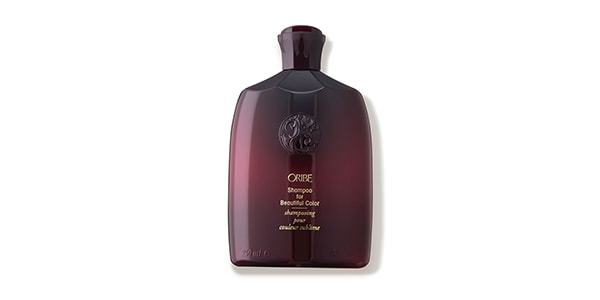
Besides maintaining the new growth every three to five weeks, Backe says there is another big factor that keeps your single-process color from looking fresh — fading. “The more you shampoo, the faster your color can fade,” he explains. He advises that you stop shampooing daily if you can, and, when you do shampoo, use a product specifically formulated for color-treated hair. He likes Oribe Shampoo for Beautiful Color, as it’s “great for all color-treated hair — no matter the shade.”
Hair Care by Color: Platinum Blonde
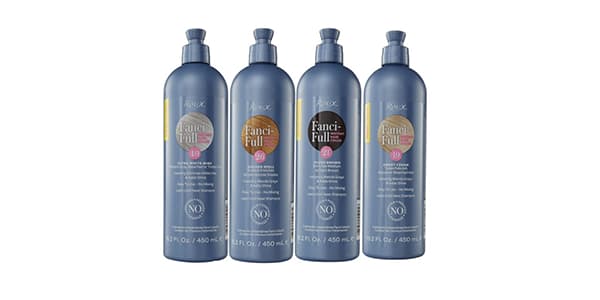
“Platinum hair is like a religious cult,” Backe says. “Once you enter the inner circle of the blondest of blond, you need to commit.” It’s true: Going platinum means a salon visit every three weeks. The more you let your roots grow out, the more drama you create for yourself and your hairdresser, Backe cautions. In between salon visits, try using a Roux Fanci-Full Rinse. “These are the oldest of old school, temporary, and give a super cool glamour to any bleach and tone,” Backe says. His personal favorite is White Minx.
Hair Care by Color: Dark Brown/Black
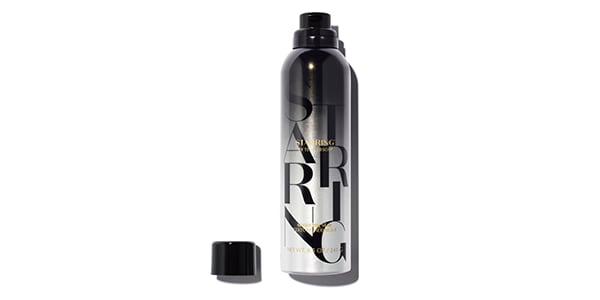
Brunettes already know this, but it bears repeating: Orange is the enemy. “Heat styling, the elements, and daily wear and tear can make your color fade and expose the orange and red tones that lie just beneath the surface,” Backe explains. He says that your best bet is a product that will help prevent color loss during heat styling. His go-to is the Starring by Ted Gibson Shooting Star Texture Meringue. “With the smell of fig, amber, and coconut, you will smell amazing, and, with its heat protecting agents, you will shine bright like a diamond,” he says.
Hair Care by Color: Red
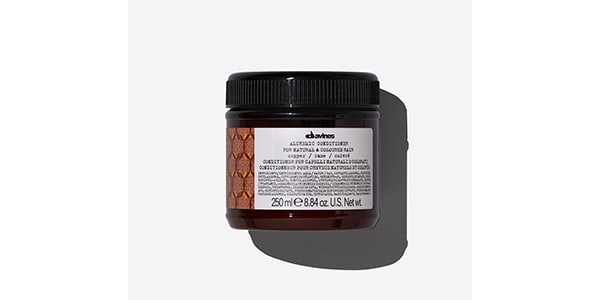
According to Backe, red is the trickiest color for two reasons:
- It’s the hardest color to perfect and maintain when you want it
- It’s the hardest to remove when you don’t want it anymore
All of you redheads know you can judge the skill of a colorist by their reds, he adds. “Once you find the technician — or, dare I say, box formula for you sacrilegious at-home colorists — stick with it,” Backe advises. “The best way to keep your copper, auburn, and flame reds looking on point is to do a biweekly gloss with a demi-permanent shade.” Apply the product to wet hair for added luster, he adds.
Ionato likes Davines Alchemic Conditioner in Copper for redheads of all sorts, from dark red/orange to the brightest copper tones. After you shampoo, squeeze out excess water and apply a walnut-sized to a quarter-cup amount all over the hair (from roots to ends) for seven to 15 minutes. Rinse well, and you’ll see the faded pigments restored. Use in between salon services to maintain color. “It’s also really hydrating, smells good, and will do wonders for your red hue,” Ionato notes.
Hair Care by Color: Gray
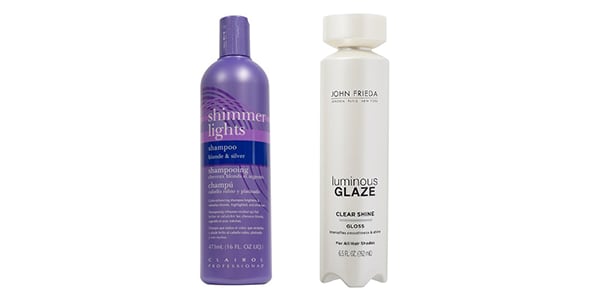
Ionato has an amazing trick for creating a smooth, uniform texture when dealing with grays (natural or dyed) — and you can mix it up at home. After shampooing, apply a mixture of about half a shot glass’ amount of Clairol Shimmer Lights and John Frieda Luminous Glaze Clear Shine Gloss. “This will refresh the vibrancy of your hair and deposit tone without using direct dye,” she says.
When it comes to styling naturally gray hair, Backe says to be careful about what products you use and how much heat you apply. “Both of those things can cause your naturally gray hair to yellow,” he says. Another culprit? Smoking. “Oh, and the biggest culprit of all is cigarette smoke,” he adds. “The fumes from smoking will turn all of your gray hair yellow and dingy. So, quit.
All products featured are independently selected by our editors, however, AEDIT may receive a commission on items purchased through our links.
More Related Articles
Related Procedures

AI Plastic Surgeon™
powered by'Try on' aesthetic procedures and instantly visualize possible results with The AI Plastic Surgeon, our patented 3D aesthetic simulator.

